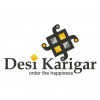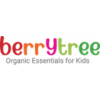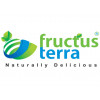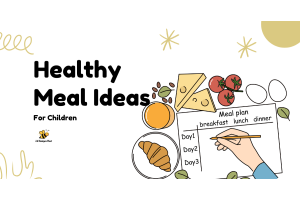Easy Kids-Friendly Vegetarian Protein-Rich Lunch Ideas

Feeding kids well doesn’t have to be a battle. If you want simple, tasty vegetarian recipes that give growing bodies the protein they need, you’re in the right place. This post is packed with protein rich recipes and healthy protein-rich recipes that are easy to make, taste great, and travel well for school lunches. I’ll also include tips inspired by indian vegetarian breakfast recipes because many of the same ideas work for both breakfast and lunch. Think healthy recipes that kids eat, not boring plates that get traded away.
These ideas focus on balanced meals that combine protein, whole grains, healthy fats, and vegetables so each lunch is a mini powerhouse. If you’re looking for healthy food for kids without hours in the kitchen, I’ll show quick-prep options, make-ahead swaps, and presentation tricks to keep picky eaters interested. You’ll get recipes, portion suggestions, allergy-friendly swaps, and a sample weekly plan to make packing lunches easy.
Why protein matters for kids
Protein builds muscle, supports immune function, and helps children grow and focus. Kids use protein for energy and to repair tissues after play. For growing kids, skipping protein can mean they feel tired, lose interest in learning, or beg for sugary snacks. Vegetarian meals can easily meet kids’ protein needs when you combine different plant proteins and include dairy or eggs if you use them. The trick is variety and pairing foods smartly.
A balanced lunch should include:
-
A protein source (beans, lentils, tofu, paneer, eggs, yogurt, nut butters, or a combination)
-
Whole grains or starchy vegetables (brown rice, whole wheat roti, quinoa, sweet potato)
-
Vegetables or fruits for vitamins, fiber, and color
-
A small healthy fat (nuts, seeds, avocado, olive oil) to help absorb vitamins and keep kids full
Key vegetarian protein sources to keep on hand
Stocking the pantry makes lunch prep fast. Here are reliable, kid-friendly ingredients and how much protein they give per typical serving:
-
Lentils (dal) — easy, mild, and full of protein. Cooked lentils are great in soups, stews, and patties.
-
Chickpeas (chana) — use canned or cooked; make chana salad, hummus, or cutlets.
-
Paneer — mild, soft, and loved by many kids; works in wraps, cubes, or stir fries.
-
Tofu — neutral flavor, soaks up sauces. Pan-fry, crumble into bhurji style, or add to curries.
-
Greek yogurt or hung curd — thick and protein-rich; use as dip, raita, or in wraps.
-
Eggs — scrambled, boiled, or omelette; fast and versatile.
-
Quinoa — a complete protein grain; mix with veggies and beans for a bowl.
-
Peanut butter and other nut butters — high energy and tasty; pair with fruit and whole grain bread.
-
Seeds — chia, hemp, and flax add protein plus healthy fats; sprinkle on yogurt or cereals.
Combine these in different ways to make protein complete and interesting.
Lunch ideas your kids will love (with quick recipes)
Below are practical, tested ideas that travel well, taste good cold or warm, and are simple to prepare.
1. Paneer and Veggie Wraps
Ingredients (serves 1–2):
-
100 g paneer, cubed and lightly pan-fried
-
1 small carrot, grated
-
1 small cucumber, sliced thin
-
2 tbsp hung curd or plain yogurt
-
1 whole wheat tortilla or roti
-
Salt, pepper, and a pinch of chaat masala
Method:
Mix paneer with carrot, cucumber, and yogurt. Season lightly. Spoon the mix onto the roti, roll tightly, slice, and pack. These wraps are a great protein protein-rich recipe and easy to eat.
Variation: Swap paneer for tofu or scrambled egg.
2. Chickpea Salad Jar
Ingredients (serves 1):
-
1 cup cooked chickpeas
-
1/2 cup diced tomato and cucumber
-
1/4 cup corn kernels
-
1 tbsp olive oil and lemon juice
-
Fresh coriander, salt, and pepper
Method:
Layer ingredients in a jar or container. Keep dressing at the bottom or mixed in. Chickpeas give solid protein, and the salad stays fresh for lunch. Add a spoonful of crumbled feta for more protein if your child likes dairy.
3. Lentil and Veggie Patties (cutlets)
Ingredients (makes 8 small patties):
-
1 cup cooked moong dal or masoor dal, mashed
-
1 small potato, boiled and mashed
-
1/2 cup finely chopped spinach or carrot
-
1 tsp cumin, salt, and mild spices
-
1 tbsp cornflour or breadcrumbs to bind
-
Olive oil for shallow frying
Method:
Combine all ingredients, form small patties, and shallow fry until crisp. Serve with ketchup or yogurt dip. These are excellent for little hands and a classic protein protein-rich recipe.
Make ahead: Freeze uncooked patties; pan fry from frozen.
4. Quinoa and Tofu Power Bowl
Ingredients (serves 1):
-
1/2 cup cooked quinoa
-
100 g tofu, cubed and pan-seared
-
1/4 cup peas or steamed broccoli
-
1 tbsp sesame seeds and a drizzle of soy sauce or tamari
Method:
Combine everything in a bowl. Quinoa adds complete protein and pairs well with tofu for a lunch that feels grown-up but is kid-friendly.
5. Egg and Vegetable Muffins
Ingredients (makes 6 muffins):
-
4 eggs, whisked
-
1/2 cup milk or milk substitute
-
1/2 cup mixed vegetables, finely chopped (bell peppers, spinach, onion)
-
Salt and pepper
Method:
Mix ingredients, pour into muffin tin, bake at 180°C for 15–20 minutes. These are easy to pack and can be eaten cold. For vegetarian kids who eat eggs, this is one of the easiest healthy protein rich recipes.
6. Hummus and Veggie Bento
Ingredients:
-
1/2 cup hummus
-
Whole grain crackers or pita slices
-
Carrot sticks, cucumber, cherry tomatoes
-
A handful of roasted chickpeas for crunch
Method:
Pack hummus with dippers. Hummus is a good source of protein and pairs well with many veggies. Add a boiled egg or paneer cubes for extra protein.
7. Masala Cheese Toast with a Side Salad
Ingredients:
-
2 slices of whole wheat bread
-
50 g grated cheese or paneer bhurji
-
Tomato slices and mild green chutney (optional)
Method:
Top bread with cheese mixture, and toast until golden. Pair with a side salad of lettuce or cucumber. This is a quick indian vegetarian breakfast recipes favorite that doubles as lunch.
8. Peanut Butter, Banana, and Oats Roll
Ingredients:
-
1 whole wheat tortilla
-
2 tbsp peanut butter
-
1 banana, sliced
-
2 tbsp quick oats
Method:
Spread peanut butter, add banana and oats, roll and slice. Nut butters provide healthy protein and energy. Substitute almond or cashew butter if preferred.
9. Spinach and Paneer Paratha with Yogurt
Ingredients:
-
1 cup whole wheat flour
-
1/2 cup cooked and chopped spinach
-
100 g crumbled paneer
-
Salt and light spices
Method:
Mix filling, roll into parathas, and cook on a tava. Pack with a small container of yogurt. This is filling, familiar, and full of protein.
10. Mixed Bean and Corn Tacos
Ingredients:
-
1/2 cup cooked kidney beans and black beans
-
1/4 cup corn
-
Taco shells or small rotis
-
Salsa and avocado
Method:
Warm the beans and corn, season mildly, fill tacos, and top with avocado. Beans are a classic protein source and kids love assembling tacos.
Quick tips for picky eaters
-
Keep flavors mild at first. Kids often prefer less spice. Season lightly and add bolder flavors gradually.
-
Make food fun. Cut sandwiches into shapes, use colorful containers, or let kids pick a topping.
-
Combine the familiar with the new. Pair a new protein-rich food with a staple they already like.
-
Small portions, more choices. Offer small amounts of two or three items instead of one large portion.
-
Hidden veggies. Finely grate carrots or zucchini into patties, muffins, or sauces to boost nutrition without a fuss.
Make-ahead and batch cooking strategies
-
Cook a big pot of lentils or beans once a week. Use them in salads, soups, and patties.
-
Bake a tray of egg muffins or vegetable frittatas on Sunday. They keep for 4–5 days refrigerated.
-
Freeze raw lentil patties and take them out the night before to thaw.
-
Pre-cook quinoa or brown rice and portion into containers. Add fresh toppings in the morning.
-
Keep a small jar of mixed seeds and dry-roasted chana for easy protein toppings.
These small steps save time and keep lunches varied.
Portion guide and nutrition notes
Portions depend on age and activity level, but here are simple rules:
-
Toddlers (1–3 years): 1/4 to 1/3 of an adult portion. Small, frequent meals help.
-
Preschoolers (4–6 years): Close to half an adult portion.
-
School-age children (7–12 years): 2/3 to a full adult portion depending on activity.
-
Teens: Almost adult portions.
Aim for 10–20 grams of protein per meal for younger kids, and 15–30 grams for older children and teens. Combining grains and legumes or adding dairy makes plant proteins more complete and satisfying.
Allergy and preference swaps
-
Nut allergy: use seed butters (sunflower, pumpkin) or extra dairy, tofu, or legumes.
-
Dairy free: replace paneer and cheese with tofu or firm soy-based alternatives. Use unsweetened soy or pea milk for baking.
-
Egg-free: try a chickpea flour omelette or a tofu scramble instead of egg muffins.
-
Gluten-free: use quinoa, rice wraps, or gluten-free bread and oats labeled gluten-free.
Sample weekly lunch plan (simple and flexible)
Monday: Paneer and veggie wrap + fruit slices
Tuesday: Lentil patties + yogurt dip + carrot sticks
Wednesday: Quinoa and tofu bowl + orange wedges
Thursday: Chickpea salad jar + whole grain crackers
Friday: Egg muffins + mixed berries (or tofu scramble for egg-free)
Saturday: Spinach and paneer paratha + raita (for weekend school lunch or home)
Sunday: Make-your-own bean tacos with avocado
Rotate leftovers into new forms. Leftover dal becomes dal pancakes or fritters. Leftover quinoa becomes breakfast porridge with fruit if needed.
Packing and keeping food safe
-
Use an insulated lunch bag and an ice pack for perishable items.
-
Pack moist items in airtight containers to avoid sogginess.
-
For warm favorites, use a thermos. Many kids prefer warm food at midday.
-
Include a small napkin and a reusable fork or spoon. Kids are more likely to eat when the setup is neat and easy.
Making lunches exciting without sugar
Kids naturally like sweets, but you can keep lunches exciting without relying on sugar:
-
Offer fruit with yogurt dip or fruit kebabs.
-
Use dips like hummus, yogurt raita, or avocado mash as fun sauces.
-
Make small colorful bento-style boxes with separate compartments.
-
Add roasted seeds or crunchy roasted chana for texture.
How indian vegetarian breakfast recipes can inspire lunch
Many Indian breakfast dishes translate beautifully to lunch. Idlis or dosas paired with protein-rich sambar, moong dal chilla with paneer stuffing, or a stuffed paratha with a side of yogurt are all hearty and balanced. Using these familiar formats makes transitions easier for kids who already enjoy these flavors. Keep spices low and add a cooling side like raita to make the meal school-friendly.
Simple habits that make a big difference
-
Plan one day a week for batch cooking. A few hours on a weekend can make the whole week easier.
-
Let kids help choose or assemble their lunches. Ownership increases the chance they will eat it.
-
Rotate a small list of favorites so you always have quick, reliable options.
-
Keep protein sources varied — different textures and flavors reduce boredom.
-
Treat food as fuel and fun. Focus on variety, balance, and gentle encouragement rather than pressure.
These easy, kid-friendly, vegetarian, protein-rich lunch ideas are practical and flexible. With a few reliable ingredients and a little planning, you can pack lunches that are healthy, filling, and loved by kids. If you want, I can give you printable shopping lists, a 4-week rotating menu, or step-by-step photos for any recipe above. Which would be most helpful?


























